
On the road toward equality that began with the Stonewall Uprising, one important stop often gets omitted from the story. Prior to 1973, the American Psychiatric Association classified homosexuality as a mental disorder. Doctors and psychiatrists, therefore, focused on “treating” or “curing” the ailment, often employing various methods of torture on their patients. Needless to say, these attempts to cure patients never worked and did more harm than good.
Cured, the new film by directors/activists Patrick Sammon & Bennett Singer which plays Outfest August 24, recounts the story of how a group of brave activists banded together in the early 1970s to lobby the APA to remove homosexuality-as-illness from the DSM, the handbook for mental health professionals. Using a mix of archive footage and contemporary interviews with the unsung heroes of the time, Sammon & Singer detail the dangerous uphill battle that queer activists fought for acceptance. For Singer, Cured marks a return to feature filmmaking after an 8-year absence. For Sammon, the film marks his directorial debut.
Queerty caught up with Sammon & Singer just ahead of the Outfest premiere to discuss the film, the inspiring heroes it features, and the refreshing example of civil, social conversation that helped queer people on the path to acceptance. Cured plays the virtual Outfest Film Festival August 24.
So how did the two of you get hooked up?
How about we take this to the next level?
Our newsletter is like a refreshing cocktail (or mocktail) of LGBTQ+ entertainment and pop culture, served up with a side of eye-candy.
Patrick Sammon: Even though this is my first film directing, I was executive producer of a film about the life and legacy of Alan Turing. That film was broadcast on Channel 4 in the UK, and has been broadcast all around the world. During that process, a mutual friend connected me with Bennett, who ended up being a consulting producer on that project. We became friends and fellow travelers in the world of documentary filmmaking, and we were both interested in LGBTQ history.
Great.
PS: I had come across this story and read about it in some queer history books. About six years ago, my friend, Charles Francis, had written a treatment about the life of Frank Kameny. In the treatment was the story of Dr. Anonymous, the man in the mask. So I owe it to Charles for sparking the idea. This key moment in the story stood out to me, and I thought it would make a great documentary. So I recruited Bennett to help me. It’s been a five-year odyssey.

That’s wonderful. So when you’re enlisted as a co-director Bennett, did you hesitate at all?
Bennett Singer: Honestly we do have a very positive chemistry. We come from different backgrounds and have complementary skills and perspectives. We knew each other well enough for me to feel like it would turn into a positive, constructive collaboration. The outcome exceeded my hopes. The film has turned out stronger and better than if I had made it by myself. Working with Patrick, and our amazing team.
PS: We want to acknowledge our co-production partner, the Independent Television Service. They’re funded by the Corporation for Public Broadcasting.
Oh marvelous.
PS: They put in a nice chunk of the budget. Without their support and partnership, we wouldn’t have gotten the film made. It’s been a wonderful collaboration. Their involvement means a version will eventually air nationally on PBS. So we’re really excited about that.
That’s great.
PS: Then, our fiscal sponsor was the Mattachine Society of Washington DC. Their mission is to focus on trying to recover this deleted history. As a fiscal sponsor, that then allowed us to accept tax-deductible donations from individuals. They’ve been a great partner as well.
BS: It was such a team effort.

Fabulous. Both of you have long histories dealing with LGBTQ issues, both on and off-screen. What was it about this particular chapter of queer history that made you select it for your film? This could easily have been a very dusty, sterile story.
PS: For me, it was just that this moment was so central to LGBTQ history. After Stonewall, it is the most important event in terms of paving the way for the success that would follow. As long as we were classified as mentally ill, nobody was going to do anything to treat us any better. The other thing—the one thing that has been so illuminating to me talking to all these heroes—is the sort of stigma [being classified as a mental illness] created among those people.
Oh, interesting.
PS: We talk to a number of people in the film. They went to a library in 1956 or whenever and the only thing they find in the library as they’re trying to process who they are: terrible words about who and what they are. The stigma that created is overwhelming. So highlighting the shift that is such a cornerstone of the modern LGBTQ movement that I felt like it deserved a telling. Your point is well taken as well when it comes to the difficulty of the subject.
Yeah?
PS: Particularly, there were so many different people involved along the way. You have people come in with an important role to play here or there, and then they step back. There was no one leader or hero, which is great. But from a filmmaking perspective, it really created a challenge for us.
In terms of the number of interview subjects you have here, who was hard to get to?
BS: The main activists were relatively accessible. I will say it took a bit of persuading to convince Richard Socarides to do an interview. He did agree to share his reflections on being the son of a psychiatrist who was arguably the chief proponent on the planet for the theory that homosexuality was a curable illness.
Right.
BS: I give Richard a lot of credit for taking that leap and opening up with his electrifying memories of being a gay teenager exploring his sexual awakening in the very house where his dad was trying to cure gay guys. That human piece he brings to the story is really moving. That did take a bit of persuasion. There was also the question of how to represent people in the story who are no longer alive.

Of course.
BS: That’s where the archival quest became a priority. In particular, John Fryer is such a central but limited part of the story. We wanted to do justice to him. When we started, we had one or two sentences from an NPR interview available. So it was quite challenging, but we did have a moment of archival discovery at when we were at the Historical Society of Pennsylvania. That’s the home of 217 boxes the Fryer estate donated to the archive. In one of those boxes, was an actual recording of him giving a speech at the APA meeting.
Wow.
BS: Hearing his voice is really so important. It takes it to a whole other level. Also, his diary entry from the next day where he writes “I’m still alive.” The risks he was taking—he could well have lost his medical license having taken that stand. He also had no sense as to whether this effort would result in any kind of change. I hope that sense of activists pushing back and arguing that they were the experts on their own lives and that science should determine a diagnosis in the DSM—I hope that comes through.
It does. One thing that really stands out to me about that element specifically, the whole process of going to the APA—tenuous as it was at times—is that people seemed willing to have a real conversation. People were willing to sit and have a conversation, to talk, to listen. We don’t see that anymore. People just fight on Twitter and cable news.
BS: That’s a great point. Even the title of the panel where Dr. Fryer gave his speech was “Psychiatry: Friend or Foe? A Dialogue.” That sense of dialogue moved from being an attack to “Let’s talk.” That to me is such a lesson in the process of social change. I also give the APA a lot of credit as an institution for members opening their hearts and minds to engage in that dialogue.
It’s kind of the least they could do, given some of the “treatments” for homosexuality.
BS: I agree. And there are so many institutions that are implacable when it comes to their beliefs. It’s dogma. It’s truth. They’re not willing to talk.
I’m curious. The horror of what some of these people went through is really terrifying. Lobotomies? ECT? Rev. Kennedy getting married at 14? This is heavy stuff. How do you keep that from taking a toll on you mentally and emotionally?
PS: I think we were committed to telling it as it was. It might have been easy for us to gloss over that. But we felt like people needed that foundation. I have to tell you: particularly the bit with the lobotomy, Bennett pushed me. I was wondering how much of it to include. But it is our history. One of the people we talked to at the Smithsonian told us that something like 5,000 gays and lesbians underwent lobotomies.
Dear lord.
PS: So it’s difficult to watch, and it’s difficult to immerse ourselves in, but we owed it to the people who endured this kind of treatment. We felt like it won’t be easy for viewers to watch, but we need it. It’s our history. We need to learn from it and appreciate the people who changed where the APA was at on it.
Why don’t we hear more about these heroes? I had heard of Frank Kameny, who’s recently coming into his own as a queer hero.
PS: Oh yes.

Rev. Magora Kennedy, I’d not heard of, and she is amazing. She should have her own postage stamp.
BS: You presume the Postal Service will be around…
[Laughter]
Don’t scare me like that.
BS: Such a fundamental question. Having spent five years before this on a film about Bayard Rustin, where that was the fundamental question: how could this man who was openly gay in the 50s and 60s and who did so much be so erased? I will say that having footage of key moments like Magora Kennedy confronting David Susskind on that talk show, which was the first time open lesbians appeared on national television.
Wow.
BS: It was a turning point in American history. The existence of evidence and documentation in that form enables these stories to be rediscovered. That’s one thing I’m so happy about with this project. I’m not sure how many people have seen that clip. It’s not something you can find on YouTube. It’s been in the vault for 50 years.
Sure.
BS: So we’re kind of excavating this. It was actually seeing that footage that caused us to track down Rev. Kennedy. We didn’t even know if she was still alive. And, as you said, she was such a dynamic witness to this piece of history. And she was someone not just involved with LGBTQ activism, but she was also part of the Civil Rights movement. She’d belonged to the Black Panther Party. She also had all her work as a minister. And she was a lesbian mother. There was really a risk there that someone could say “You’re unfit to raise children.”
Oh goodness, yes.
BS: The pushback could have been brutal. But she really felt like it was a moment to speak truth to power and accept those risks. So for me it’s been so eye-opening to connect with these folks, some of who are in their late 80s.

I’m so interested to chat with co-directors to learn: how do the two of you find a working dynamic together? How do you settle disputes?
PS: From the beginning, I think our collaboration made the film better than if either of us had done it on our own. So I think the appeal of us working together is that we have similar personalities. We’re not yellers, not screamers. If we disagree, we don’t raise our voices. That was important to us. I know, for myself, I wouldn’t have done well who had a different sensibility. Bennett alluded to it, but we have complementary skills. One of us would suggest something, and it would turn out really well.
Will you collaborate again? Where do you go from here?
BS: It seems like we’re gearing up for a big outreach campaign and education work. That could take us well for a year at least. We’ll be taking the film, at least virtually, to campuses and medical schools. We have an ambitious but exciting idea how to bring together activists and LGBTQ people of different generations to talk about life before and after the diagnosis was changed. We want to bring together people in their 80s and people in their 20s to spark dialogue and connect different generations of activists. I think that has a lot of potentials that way, and to shine a light on the ongoing issue of conversion therapy which does remain legal for minors in a majority of states.
Unfortunately.
BS: We think this film can focus people’s attention on that and can be a constructive addition to that conversation. After 5 years, we’re so happy to share this with the world.
Cured has its world premiere at the virtual Outfest 2020. For information on upcoming screenings, outtakes, and other related updates, visit CuredDocumentary.com.



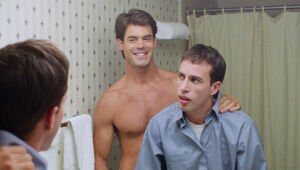

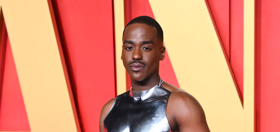

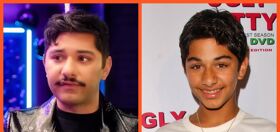










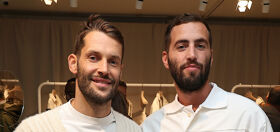


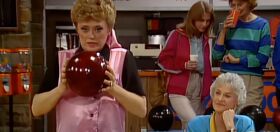
Invader7
heterosexuality is a mental illness and a sickness !!! Look at all of the sick crap the breeders have done sexually over the centuries..
fur_hunter
To those I have met who have said that homosexuality is a choice, I have said this. If homosexuality is a choice, then heterosexuality is as well. And to know the difference, you would have to try both to know which one you want to pick. Also, since such a decision would be such an incredible choice for life, one would remember that day and year. So, when was it that you chose to be straight?
And of course, their reaction is….Well…I have ALWAYS been straight. My comeback is….Well, Sweetie….I’ve ALWAYS been Gay. Got it, you moron?